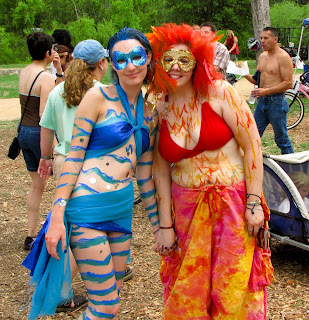I shot at f2.8 and, of course, the camera was on a tripod for the exposure. The tripod often being the most important tool in creating good shots.
Lately I've become very interested in using small LED panels to take the place of flashes. Part of the reason is the general compulsion to keep learning and to keep commercial photography interesting for me. But another part of the equation is the belief that these light sources will be become the ubiquitous light sources of the future. At some point flash might become the specialty tool and LED's the day-to-day lighting instrument of choice. Maybe not, but there's no real cost for experimenting.
I did a portrait today and I lit it the same way I would have with flash or with tungsten but this morning I decided to use LED panels as my primary light source. I set up a nine foot wide gray canvas background and lit it with two conjoined, small, battery powered LED panels. Like these: Little LED
I used the six foot by six foot PhotoFlex light panel
Seems that no matter what the distributors say there is a nice big spike in the green spectrum of the lights. If you do a custom white balance you'll be pretty much okay but you might find some anomalies in the color balance that lead to a few splotches. I shot my Canon DSLR in RAW so I was able to lower the saturation and increase the luminance of the green channels (and, to a certain extent, the blue channels) in order to compensate. But here's what I learned through subsequent trial and error: adding a 1/4 strength minus green gel filter does a reasonably good job compensating for the aberrant color spike. The name of the game is get the light as close to daylight as possible.
If you don't have a color meter handy you can always set your camera white balance to daylight, shoot a white target, use the color eyedropper to correct to white and note the numbers you get in the Lightroom develop panel. You're looking for two separate but related parameters. You want to see how close to 5500 degrees kelvin the color temperature is and you'll want to note how many points of green or magenta have been dialed in to get a neutral white target. You'll likely see a swing over to the magenta side of the scale which means you'll need to add some magenta to compensate. If Lightroom indicates that it requires 30 points of magenta to render neutral white you'll probably have a filtration starting point of between 1/4 and 1/2 minus green filter. That's actually a magenta filter that takes out green.
When you filter you're going to loose some power and that's important with LED panels. They don't put out a tremendous amount of light and the light they do put out isn't collimated into efficient columns of focused light like you might find in a well designed tungsten fixture. You may need to move the panels closer in to the diffusion material. Don't worry. Nothing will catch on fire.
So, why go through this exercise if you already have tons of great flash equipment that works well? For one thing, the quality of continuous light is different than flash. There's also.....no flash. And that means fewer anticipatory flinches and blinks. You get into a motordrive rhythm that's heavenly. And with modern DSLR's you never need to stop. There's ample light for focusing and the ambient light (after you've figured out the filter factor) makes nice fill light. It's also new and different. And for me that's enough.






















































